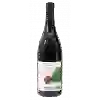
Winery Montel BenoitGame Over
This wine generally goes well with
Details and technical informations about Winery Montel Benoit's Game Over.
Discover the grape variety: Tardif
This is a very old grape variety in southwestern France, with "traces" found in the high Pyrenees, but also in the Atlantic Pyrenees and in the Gers. Virtually unknown in other French wine-producing regions, as well as abroad, it is registered in the Official Catalogue of Wine Grape Varieties, list A1. Tardif is certainly the ideal grape variety to combine with Tannat, especially when the latter is in the majority. The overall quality of its polyphenols is such as to compensate for the often harsh tannins of Tannat in young wines.
Informations about the Winery Montel Benoit
The Winery Montel Benoit is one of of the world's great estates. It offers 16 wines for sale in the of Puy-de-Dome to come and discover on site or to buy online.
The wine region of Puy-de-Dome
The wine region of Puy-de-Dome is located in the region of Val de Loire of Vin de Pays of France. Wineries and vineyards like the Saint Verny Vignobles or the Saint Verny Vignobles produce mainly wines red, white and pink. The most planted grape varieties in the region of Puy-de-Dome are Gamay noir, Pinot noir and Chardonnay, they are then used in wines in blends or as a single variety. On the nose of Puy-de-Dome often reveals types of flavors of earth, citrus or sour cherry and sometimes also flavors of wild strawberries, pepper or leather.
The wine region of Val de Loire
Val de Loire is a regional PGI title, covering wines produced in an area that roughly corresponds to the Val de Loire wine region in northern France. The PGI catchment area covers 14 departments and is one of the largest in France in terms of area. The Terroir is extremely varied throughout the Loire Valley region. Wines produced under the PGI title have as much style as the AOC appellations of the Loire.
The word of the wine: Champagne rosé
Often obtained by adding red wines (from Champagne), it is even the only vineyard where this practice is allowed. Some producers prefer the practice used in other regions, i.e. a short maceration to extract sufficient colouring matter. This results in winey rosés for meals. Elegant aperitif rosé is more often made from red wine coloured Chardonnay. Rosés can be vintage or non vintage.














